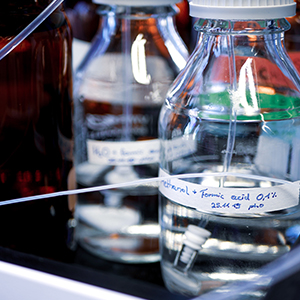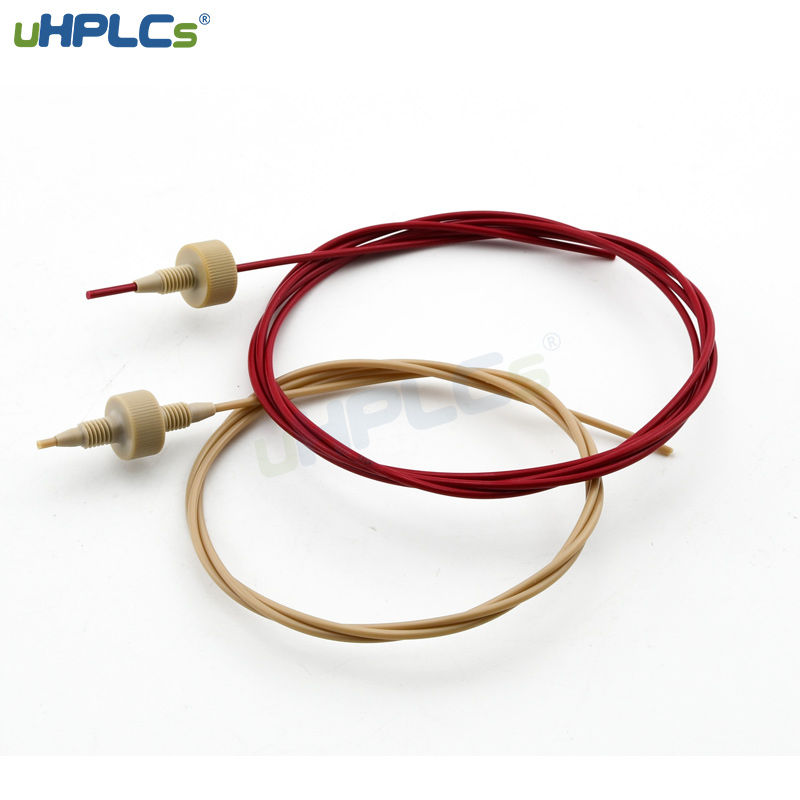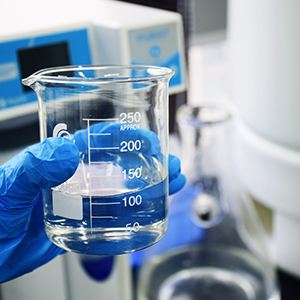In the previous article, we talked about how when you do liquid phase analysis, if the intensity of the solvent you use to dissolve the sample and the mobile phase of the initial gradient conditions are relatively different, for example, if you use 100% acetonitrile to dissolve the sample. Still, the mobile phase of the initial gradient conditions is only 10% acetonitrile, and the problem of peak precession, trailing and splitting will easily occur.

This is what we often call the solvent effect of the liquid phase. (Previous link: The larger the dead volume, the better how the peak comes out?!)
First of all, let’s review the process of the sample entering the hplc column. The sample we want to analyze is transferred inside the injection vial after a series of pretreatment, dilution, and volume fixation. The autosampler takes a certain sample volume (say 20 µl) and injects it into the liquid phase system.
The sample we are talking about here is the sample molecule we want to analyze and the solvent used to dissolve the diluted sample molecule.
Subsequently, the mobile phase pushes the sample, travels through the hplc tubing between the injector and the hplc column, and enters the chromatography column.

The sample solvent is carried away by the mobile phase. In contrast, the sample molecules undergo non-stop adsorption and desorption between the stationary and mobile phases inside the liquid chromatography column and finally run out of the hplc column into the detector and are detected, forming a chromatographic peak.
Let’s take an example.
If you use the liquid phase method, the initial condition is a mobile phase of 30% acetonitrile-water, and the sample is dissolved in 10% acetonitrile water.
The sample enters the liquid phase system and quickly comes to the head of the column. The sample starts to partition between the stationary and mobile phases, while the sample solvent is carried away by the mobile phase.
Let’s compare the three sample molecules ABC in different positions. The movement of molecule A in the column at the beginning is at 30% of the mobile phase conditions.
And the movement of molecules B and C at the beginning is actually under the conditions of solvent as mobile phase, which is 10% acetonitrile-water. At this point, C moves the slowest, B the second slowest, and A the fastest.

In this way, the sample molecules become more closely distributed in the column head as the solvent is carried away by the mobile phase, which is called solvent focusing.
Contrary to the solvent effect mentioned in the previous issue, it enables chromatography to produce sharper peaks and higher column efficiency.
So we can see that when we are pursuing the sensitivity of liquid phase analysis, choosing the right sample solvent and using solvent focusing can allow us to enter a larger sample volume while minimizing the impact on the peak shape.
Also You Can Send Us Email Directly As Follow : sales@uhplcslab.com
We Will Send Back With 24-Hours, Thanks for Your Patient !
Post time: Sep-24-2022






